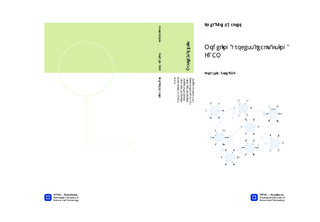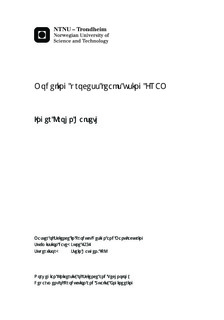| dc.description.abstract | This thesis was written to for man understanding of whether the Functional Resonance Analysis Method (FRAM) is a possible alternative approach to review process leaks on offshore installations and gain some experience on the amount of work involved, whether there are different results compared to conventional methods and if quantification is possible and suitable. To answer this, a literature survey was performed, resulting in an explanation of the course of the method. After this, the method was tested on an exemplified operation on pressurized equipment. These results were in turn used to evaluate the method in terms of workload, quantification and the characteristics of the method. FRAM, when used to analyse risk, contrary to retrospect when considering accidents, consists of four steps. First the system or operation considered is divided into functions. For each function six parameters are defined; input, output, preconditions, resources, time and control. The next step consists of characterizing the potential variabilities of the function, namely the variation of possible performances of a function. In the third step the network is constructed using the defined parameters. The parameters link the functions together before the variations is traced throughout the system identifying functional resonance, this is called following a signal. In the last step barriers for variability are identified, in addition, performance monitoring may also be specified. The method was tested on a description of an operation taken from the studies of Barrier and Operabiilty Risk Analysis (BORA) where pressurized equipment is closed down to disassemble some equipment. In this case a pump is removed from a separation system. After performing the analysis it was found that the process had several barriers and opportunities for dampening the Disassembly function, which is critical in terms of leakages. The other functions critical in terms of leakages, the functions involved in closing down and isolating the system, does not have the same layer of protection. The source of the signal creating resonance in these functions is often found in the functions Draw up work description and Coordination with CCR, it is therefore natural to direct new barriers towards these functions. The results of testing the method on this system has shown that FRAM is a suitable method for modeling the cause of process leakages. The method provides the analysts with the tools to ask the right questions before looking for the answers. The methods lack of assumptions of typical cause-effect relations and decomposition of the system into components opens up for the analysts to see new aspects and connections that might have been overlooked when using more traditional methods. One of the methods greater disadvantages is that it is, compared to more traditional methods, time consuming. Some of this time can be attributed to the fact that the method is new and requires the user to get accustomed to the method and a new way of thinking. Since the method requires a team effort, this may make the apparent difficulty appear larger. Another element that may add time to the analysis is the lack of a detailed step by step approach portraying how to perform the analysis, which more common and established methods have. The method is extensive, it is important that the constraints and limitations are thoroughly defined and the focus of the analysis well specified and understood. In lack of this, the network would become very large and difficult to handle and it would be easy to miss a possible outcome of a signal. This also applies to the functions, if they are defined covering too much it would be difficult defining the variability and handling this throughout the system. FRAM is developed as a qualitative method, and for the time being there are no established steps formulated for the method to support quantification. Since the method focuses on the likelihood of function variability rather than the probability of a malfunction or failure, a quantification would require some changes to handle this. It should be possible to mathematically construct the network connections and their variability, the problem is finding good functions representing the variability, in other words data. A possible solution that would not require altering the method as it is today is adding an additional step using the results found when examining the resonance within the network. By doing this the data needed would only be on the variability known to create unwanted events, instead of all the defined variability. A natural method to use would be an event tree, this is however a linear method and some simplification might be necessary when considering each path of resonance pursued in the quantification. Several event trees might be needed to quantify all the different scenarios and data on both technical, organizational and human variations must be documented. | nb_NO |

